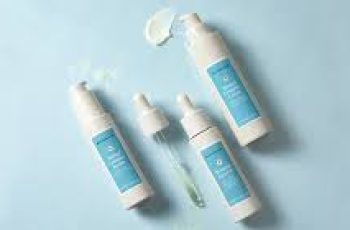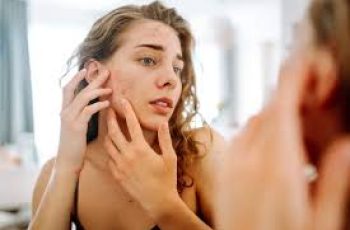
Can Retinol and Azelaic Acid Be Used Together? Your Ultimate Guide
If you’re serious about skincare, you know that combining active ingredients can be tricky. Some pairings are perfect, while others can irritate your skin. So, what about retinol and azelaic acid?
They both offer impressive benefits. Retinol is known for targeting wrinkles, acne, and dullness. Azelaic acid soothes inflammation, reduces dark spots, and clears pores.
But can they be used together? Let’s dive into this skincare match-up.
What Is Azelaic Acid and What Does It Do?
Azelaic acid is a dicarboxylic acid naturally found in grains like barley and wheat. It’s a gentle exfoliant and is particularly helpful for sensitive or acne-prone skin.
Here’s what it does for your skin:
Reduces inflammation and calms redness
Helps clear clogged pores and reduce breakouts
Fades dark spots, melasma, and post-acne marks
Improves skin texture and tone
Kills acne-causing bacteria with antibacterial power
Safe for rosacea and sensitive skin types
Doesn’t increase sun sensitivity (unlike many exfoliants)
You’ll find azelaic acid in serums, creams, gels, toners, and cleansers. It’s suitable for daily use, but how often you apply it depends on your skin’s needs and the product’s strength.
What Is Retinol and How Does It Work?
Retinol is a vitamin A derivative and is often seen as a gold-standard anti-aging ingredient. It’s a strong performer, tackling many skin concerns by speeding up cell turnover.
Here’s how retinol improves your skin:
Boosts collagen and elastin production
Reduces the look of fine lines and wrinkles
Improves skin texture and refines pores
Helps fade hyperpigmentation and acne marks
Clears congested pores and reduces breakouts
Thickens the skin barrier over time
Increases skin renewal for a youthful glow
Retinol is usually found in serums, creams, and facial oils. It should only be used at night because UV exposure breaks it down, making it less effective.
Can You Use Retinol and Azelaic Acid Together?
Yes—you can use retinol and azelaic acid together. But you need to do it carefully, especially if your skin is sensitive, dry, or prone to irritation.
Each ingredient provides powerful exfoliation and skin-renewing benefits. Used together, they can work wonders, especially for acne-prone or pigmented skin.
However, because both can be irritating on their own, combining them can be too much for some. It’s best to ease into using them in your routine.
Benefits of Using Retinol and Azelaic Acid Together
Retinol unclogs pores and boosts collagen deep within the skin
Azelaic acid calms irritation and fades leftover pigmentation
Together, they help fight acne, texture, dark spots, and signs of aging
Skin looks smoother, brighter, and more even-toned
Azelaic acid can reduce some of the irritation caused by retinol
When used strategically, they make a great team—boosting each other’s effects without overwhelming the skin.
What’s the Best Way to Combine Retinol and Azelaic Acid?
There are two safe approaches to using both ingredients in a routine:
Option 1: Split By Time of Day
Morning: Use azelaic acid after cleansing. Follow with moisturizer and sunscreen.
Evening: Apply retinol to clean skin. Wait 20 minutes, then follow with moisturizer.
This approach gives your skin time to rest and rebalance between actives.
Option 2: Alternate Days
Use azelaic acid every other morning or night, depending on your routine.
Use retinol 2-3 nights per week to start.
Adjust frequency as your skin builds tolerance.
This method reduces the risk of irritation, especially for sensitive or dry skin types.
Which Goes First: Azelaic Acid or Retinol?
The golden rule in skincare is to apply products from thinnest to thickest.
If both are serums, apply azelaic acid first (especially if it’s water-based).
If azelaic acid is in a toner, use it right after cleansing.
Apply retinol at night only, after your skin is clean and dry.
Avoid layering them directly on top of each other unless your skin is well-adjusted and non-reactive.
Can You Combine Azelaic Acid, Retinol, and Niacinamide?
Yes, but you shouldn’t apply all three together at once, especially if you’re new to actives.
Here’s how to use them in a routine:
Morning:
Cleanser, Azelaic acid (serum or toner), Niacinamide serum, Moisturizer, Broad-spectrum SPF 30 or higher
Evening:
Cleanser, Retinol serum, Moisturizer
Niacinamide pairs well with both retinol and azelaic acid. It helps calm skin, reduces inflammation, and supports the skin barrier.
If irritation occurs, simplify your routine and reintroduce actives slowly.
Do I Need Sunscreen When Using Retinol or Azelaic Acid?
Yes—every single day.
Retinol makes your skin more sensitive to UV rays. While azelaic acid doesn’t cause sun sensitivity, it’s still crucial to protect your skin from environmental damage.
Use a broad-spectrum sunscreen with SPF 30 or higher, even on cloudy days. Apply it every morning as the last step in your skincare routine.
Which Ingredient Is Better: Retinol or Azelaic Acid?
There’s no one-size-fits-all answer. Both ingredients have similar benefits but serve different purposes.
Choose retinol if your main concern is:
Deep wrinkles, Severe acne, Loss of skin elasticity, Rough skin texture
Choose azelaic acid if your concern is:
Sensitive or reactive skin, Mild to moderate acne, Rosacea or redness, Post-acne dark spots or pigmentation
If your skin can tolerate both, using them strategically gives you the best of both worlds.
How Often Can I Use Retinol and Azelaic Acid?
Retinol: Start 2–3 nights per week, then increase as your skin adjusts.
Azelaic Acid: Can often be used daily, but start with 2–3 times a week if you’re sensitive.
Listen to your skin. If you feel irritation, reduce frequency or try alternating the nights you apply each ingredient.
Signs You’re Overdoing It
Watch out for these symptoms:
Redness, Burning or itching, Dry patches or peeling, Sensitivity to touch or light
If this happens, scale back. Focus on hydration and barrier repair for a few days using ingredients like ceramides, hyaluronic acid, or panthenol.
Sample Skincare Routine Using Retinol and Azelaic Acid
Here’s an example of how to combine both ingredients effectively:
Morning Routine:
Gentle cleanser, Azelaic acid serum or toner, Niacinamide serum, Lightweight moisturizer, Sunscreen (SPF 30 or higher)
Evening Routine:
Hydrating cleanser, Pat skin dry and wait 20 minutes, Retinol serum (pea-sized amount), Barrier-repair moisturizer
Optional (1–2 times per week): Use a hydrating mask or sleeping pack to reduce dryness and irritation from retinol.
Final Thoughts
Combining retinol and azelaic acid can deliver clearer, brighter, and smoother skin. Just make sure to go slow, observe how your skin reacts, and always apply sunscreen.
With consistency and the right routine, these ingredients can work in harmony to tackle multiple skin concerns—from breakouts to fine lines to dark spots.
Still Unsure What’s Best for Your Skin?
Everyone’s skin is unique. If you’re uncertain or experiencing chronic irritation, consult a dermatologist or licensed esthetician for a custom skincare plan.
Want More Skincare Tips?
Follow us on Instagram @TheBeautyInsiders for expert tips, product reviews, and tutorials. We’re here to answer all your skincare questions—just send us a DM!
And don’t forget to subscribe to The Green Sofa on YouTube for video content, product spotlights, and skincare deep-dives. Hit the bell icon so you never miss an episode!


